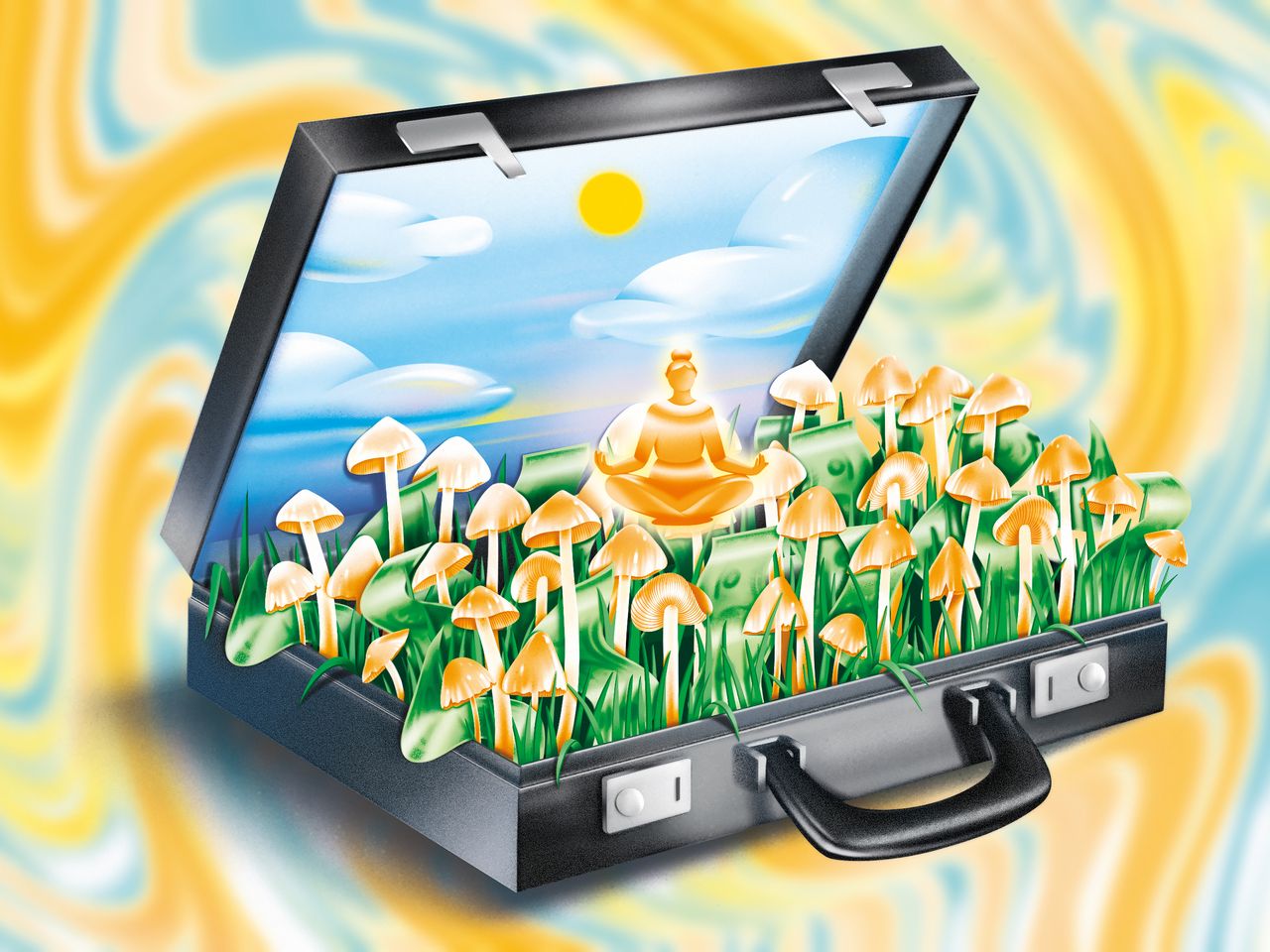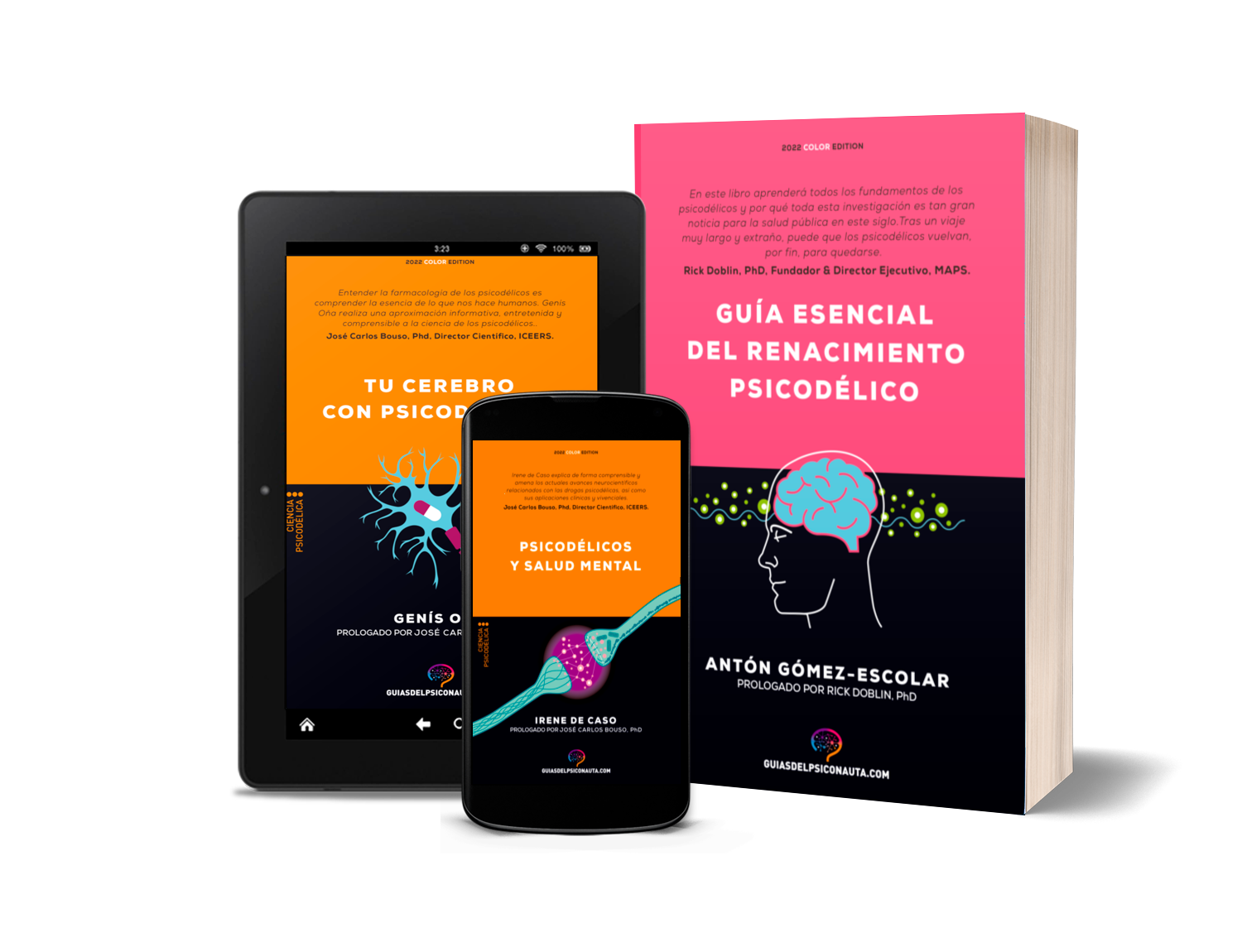By Gabriel García January 12, 2024
Psychedelics are substances that alter perception, consciousness and mood, causing intense sensory experiences and sometimes hallucinations. Some of the best known psychedelics are LSD, psilocybin (found in magic mushrooms), DMT (a component of ayahuasca) and mescaline (extracted from certain cacti).
These substances have been used for centuries by various indigenous cultures for ritual, spiritual and therapeutic purposes. However, their use in the West has been limited by their legal prohibition and social stigma, associating them with the hippie counterculture of the 1960s and 1970s.
In recent decades, however, there has been a resurgence of scientific and medical interest in psychedelics, due to their potential to treat various mental disorders that do not respond well to conventional treatments, such as depression, anxiety, post-traumatic stress disorder, addictions or obsessive-compulsive disorders.

How do psychedelics act on the brain?
Psychedelics act primarily on receptors for serotonin, a neurotransmitter involved in the regulation of mood, sleep, appetite and cognition. By stimulating these receptors, psychedelics cause changes in brain activity, increasing communication between regions that are normally poorly connected and decreasing the activity of the autonomic nervous system, which controls stress responses.
These changes can facilitate greater introspection, a sense of connection with oneself, others and the environment, greater emotional and cognitive openness, and a reduction in negative and rigid thoughts. In addition, psychedelics can induce mystical or spiritual experiences that can have a positive impact on psychological well-being.
What evidence is there for the therapeutic effects of psychedelics?
Although research on psychedelics is still limited and faces numerous legal and ethical hurdles, studies to date have shown promising results.
For example, it has been shown that a single dose of psilocybin can significantly reduce symptoms of treatment-resistant depression for months, even in patients who have not responded to other drugs or therapies. It has also been observed that LSD can improve the mood and quality of life of terminally or chronically ill patients, alleviating their anxiety and fear of death.
Another interesting case is that of DMT, the main component of ayahuasca, a sacred drink used by Amazonian peoples. It has been shown that DMT can have beneficial effects in the treatment of addictions to alcohol, tobacco or cocaine, by reducing cravings for these substances and increasing motivation to change. In addition, DMT may help overcome emotional trauma by facilitating the processing and integration of painful memories.

What does psychedelic-assisted therapy involve?
Psychedelic-assisted therapy is not simply administering a hallucinogenic substance to a patient. It is a carefully designed process involving several sessions of preparation, administration and follow-up.
In the preparation session, the therapist informs the patient about the expected effects of the substance, helps the patient set goals and expectations, and provides guidelines for coping with possible difficulties or unpleasant experiences during the journey.
In the administration session, the patient receives a controlled dose of the substance in a safe and comfortable environment, under the supervision of the therapist. The patient usually wears headphones with relaxing music and a blindfold to encourage introspection. The therapist accompanies the patient throughout the experience, offering emotional support and guidance if needed.
In the follow-up session, the therapist helps the patient to integrate what was experienced during the journey, facilitating reflection and understanding of the experiences, feelings and meanings that emerged. The therapist also evaluates the changes produced in the patient and provides tools to maintain them over time.
What challenges and opportunities does psychedelic therapy present?
Psychedelic therapy is an innovative and promising modality that may offer new hope to millions of people suffering from mental disorders who do not find relief from conventional treatments. However, it also poses a number of challenges and opportunities that require further research and regulation.
For one, more studies with larger and more diverse samples, rigorous controls and long-term follow-up are needed to confirm the efficacy and safety of psychedelics in different populations and conditions. It is also important to identify the neurobiological and psychological mechanisms underlying the therapeutic effects of psychedelics, as well as the factors that may influence their response, such as dose, context or personal characteristics of the patient.
On the other hand, it is essential to establish a legal and ethical framework that regulates the medical use of psychedelics, guaranteeing their access to those who need them, avoiding their abuse or misuse, and respecting the rights and autonomy of patients. In addition, it is essential to change the social perception of psychedelics, overcoming the prejudices and stigmas that surround them, and recognising their therapeutic and cultural value.

What role does investment play in this field?
For psychedelic therapy to move forward and establish itself as a valid and accessible option for improving people’s mental health, it requires financial support from public and private investors who are committed to this emerging field.
Investment in psychedelic research and development can have a major social and economic impact by helping to reduce human suffering, improve people’s quality of life, reduce health costs associated with mental disorders, and generate new scientific and medical knowledge.
A recent example of such investment is made by ATAI Life Sciences, a biotech company dedicated to developing innovative treatments for mental illness. ATAI has announced a $50 million investment in Beckley Psytech, a company focused on the development of synthetic psilocybin-based psychedelics to treat a variety of neuropsychiatric conditions.
This investment will allow Beckley Psytech to advance its clinical trials with psilocybin to treat SUNCT syndrome, a rare and extremely painful type of cluster headache, as well as explore other potential indications for the substance. In addition, this investment will facilitate collaboration between the two companies to develop new psychedelic compounds with improved properties.
This news is a sign of the growing interest and investment in the field of psychedelic therapy, which has the potential to be a breakthrough for global mental health.

If you are interested in learning more about this exciting world, we invite you to consult the Psychonaut’s Guides by Argonowta. These books will give you a broad and balanced view of psychedelics and their potential therapeutic effects. Remember, however, that these substances are not a panacea or a magic solution to all your problems. Their use requires professional guidance, an appropriate context and a responsible attitude. Psychedelics can be a powerful tool for personal change, but they can also be dangerous if used inappropriately or irresponsibly.
The Psychonaut’s Guides from Argonowta Publishing is a collection of books that explain in a rigorous and accessible way the scientific, historical, cultural and experiential aspects of psychedelic substances. These guides offer updated and contrasted information on the therapeutic and neuroscientific applications of psilocybin, LSD, DMT and MDMA, as well as practical advice on how to prepare, carry out and take advantage of psychedelic experiences. The Psychonaut’s Guides are a must-have reference for anyone interested in learning about the psychedelic renaissance that is transforming mental health and changing lives.





